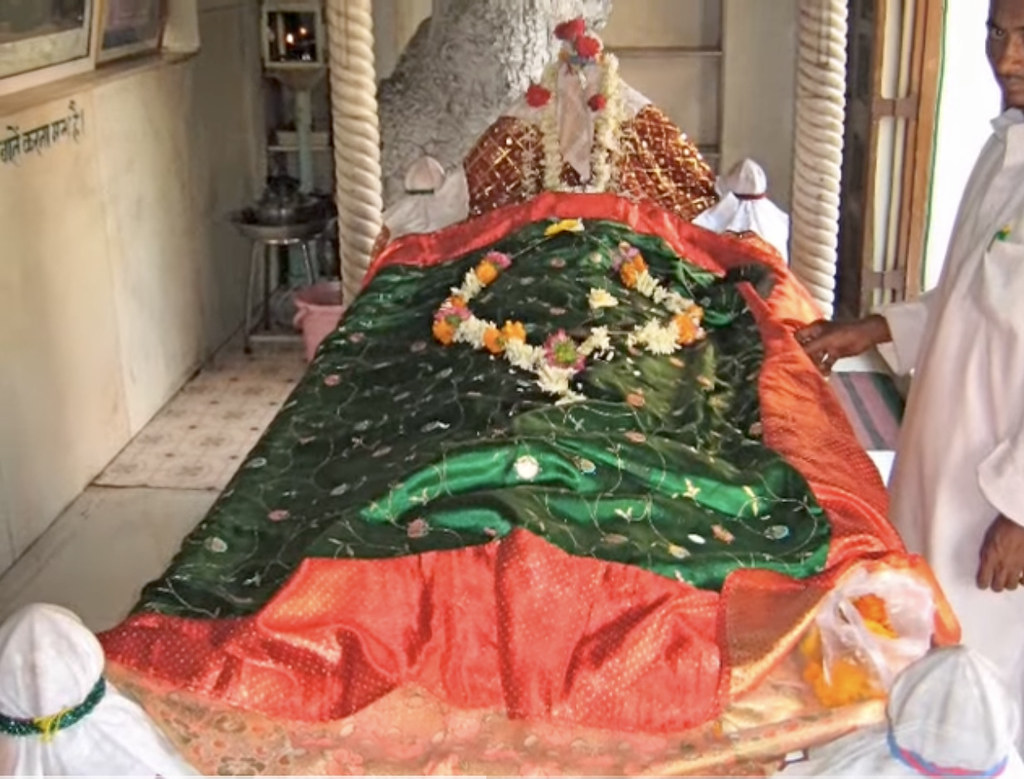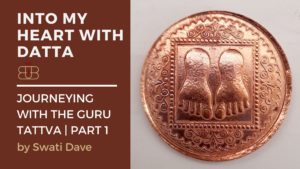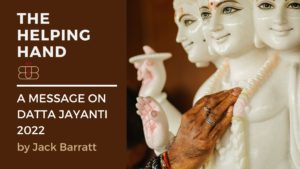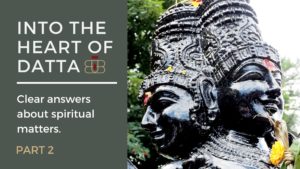Hazrat Babajan
Overview and Significance
Hazrat Babajhan was born in a Royal Muslim family of Baluchistan, now modern Afghanistan, between 1790 and 1800. She was called ‘Gul Ruk’h’ because she had a ‘face like a rose” or ‘cheeks like roses.’ Her physical appearance was lovely and her inner spirit, like a rose, was full of fragrance, and she would attract people to herself wherever she went. Her total years of existence on this earth are still not precisely known. Based on different information, it could be around 130 years to 140 years. Babajan’s actual date of birth is not known and not mentioned anywhere; her Mahasamadhi was on 21 September 1931 in Pune, India.
Life History
As Babajan was born into a royal family, all material comforts and training were given to her for royal positioning. Babajan was very intelligent and so learned the Koran by heart at a very young age. Also, she was fluent in many other languages like Arabic, Persian, Pashtu, Urdu, and even English. When Babajan’s childhood friends came home to play with her, they were very disappointed because she was not interested in games. She preferred quiet rooms. She was spiritually inclined from childhood and regularly recited prayers from the Quran or spent time in silent meditation. As she grew up, her physical appearance also enhanced. For a Pathan princess to be out of wedlock was unheard of during that era, so her parents broached the topic of marriage, but she had a firm refusal. Unbeknownst to her parents, she had already chosen her beloved as GOD. Her intoxicated heart was raptured with Divine Love, and she wept for the Divine to become ONE with her. The mounting pressure from her parents for wedlock, her desire not to hurt her parents, and the intense search for her Beloved made her decide to run away from home. She ran away from home on her wedding day at the age of eighteen. Bhalushitan was never found again by her parents.
Leaving her home behind, disguised in her burqa, Babajan traveled towards the northeast on foot, climbing all mountains and terrains toward Peshawar, the frontier city at the foot of the Khyber Pass. Peshawar and Rawalpindi are currently in Pakistan. Babajan roamed over the streets of Peshawar and Rawalpindi raptured in divine love for her Beloved. She was so completely absorbed in Divine Madness that she appeared as a madwoman to people on the streets. But her only wish was to have a glimpse of the face of her Beloved, crying out to Him to come or she would die, ‘Come my Beloved to meet me! Come soon, or I shall die!‘ As years passed, Babajan’s Divine madness was turning into Divine intoxication, and tears flowed through her eyes at all times. After much yearning in the heart and teary eyes, Babajan met a Hindu Sadhguru (whose name is unknown]. With his guidance, Babajan retreated to a cave in the wilderness at the top of a mountain outside Rawalpindi and practised rigorous spiritual sadhana for one and half years. Then the Sadhguru instructed her to leave. Later, traveling on foot, Babajan reached Punjab, now in India. The flames of separation from her beloved were fully burning her, and she was almost ready to burn herself completely; not a speck of desire or attachments to worldly things pulled her back to samsara (earthly life). Finally, she met a Muslim Saint, Mohammedan Qutub, also known as Maula Shah, in Multan, and with his grace she, at age thirty-seven, fully united with her soul. She became God-realised, and nothing remained except God. Her soul cried out loudly in bliss: ‘I alone am. There is no one besides me. I am Truth! – Anal Haqq!‘
She had temporarily lost all consciousness of the universe and herself. In her state of majzoobi yat, she was aware of being God-Conscious, but unconscious of creation and her body and mind. She had reached her goal, ‘Anal Haqq – I am Truth!‘ From India, in her God-realised state, Babajan traveled back to the northern regions, drawn again to Rawalpindi and her previous Sadhguru. After spending several years with her Sadhguru, and through His Grace, Babajan regained consciousness of the universe of duality and was transformed into a Perfect Master.
At that time, being one of the five Perfect Masters on earth, she left Rawalpindi and embarked on several long journeys through the Middle Eastern countries – Syria, Lebanon, Iraq, and others. She traveled to Mecca disguised as a man by way of Afghanistan, Iran, Turkey and traveled back into Arabia. At Mecca, she would feed the poor, nurse the ill, and also took care of cows. From Mecca, Babajan traveled to the tomb of the Prophet Muhammad at Medina. Leaving Arabia, she wandered overland to Baghdad and from Iraq back to Punjab, in India. She traveled south to Nasik and established herself in Panchvati, an area known by Hindus in India to be sanctified by Lord Rama during the Ramayana era. To the local people, her spiritual ‘manliness’ was apparent. The power of her glance overshadowed her feminine body and attire. From Nasik, Babajan traveled south to Bombay, where she stayed for several months. After finishing her spiritual work there, she returned to Punjab and spent several years wandering throughout northern India.
While in Rawalpindi, she was in a glorious, spiritually intoxicated state of God-consciousness and declared in the presence of a group of Muslim soldiers that she had divine authority: ‘It is I who created the universe! I am the creator of everything!‘ Such bold declarations caused a group of Baluchi soldiers to become furious fanatics, actually not understanding her consciousness as truly being one with God. They attacked her and held her forcefully while some dug a pit and buried her alive. By killing this ‘madwoman’ Babajan, the soldiers believed they would be spiritually rewarded since they had safeguarded Islam’s sacred truth. They left Babajhan to die in the grave, but she did not die.
It is not known how she survived this ordeal, but around 1900 she managed to return safely to Bombay, over a thousand miles south, where she lived on the sidewalk of a street called Chuna Bhatti near Sion, Mumbai. Babajan was almost 90 years old by then, and the rest of her life she spent in Pune.
Before settling in Pune, India, Babajan went a second time to Mecca from Mumbai sailing in a ship S.S. Hydri. Although she was quite old, well over 100 years, she was in a blissful state but had good conversations with passengers and crew, recited poetry of Hafiz and Rumi, and would recite prayers and converse in the English language.
On the ship, an unexpected incident happened. Heavy rain and a terrible storm arose in the sea. The passengers were terrified and panicked, thinking the ship would sink. Babajhan appeared on the deck, unaware of the danger. In a booming voice, she shouted to one of the passengers named Noorma Pankhawala, ‘Wrap a scarf around your throat to form the shape of a bag and approach every passenger – including the children and European travelers – and collect one paisa from each. Then have them make an urgent appeal (intention) to God with this prayer, saying, “O God! Save our ship from this storm. On reaching Medina, in the name of your Beloved Prophet, we will offer food to the poor.”‘ Immediately, the man, Noorma, collected one paisa (penny) from each person, and all fervently repeated what Babajan had commanded. Gradually the storm subsided, and miraculously, all passengers escaped death, and word of Babajan’s miracle spread over Mecca. Babajan assumed the role of an ordinary pilgrim, performing prayers five times a day at the shrine, but after a few days, she traveled north to Medina. There in the name of Muhammad, the Prophet of the All-Merciful, she distributed grain to the poor. After a year, she returned to India and traveled to Ajmer to pay homage at the Sufi Qutub-e-Irshad, Mu’inuddin Chishti, who had established Islam in India. From Ajmer, she returned to Mumbai and then soon after traveled west to Pune.
When she first lived in Pune, Babajan would wander in the Cantonment area or roam about the city and frequent even the filthy slums. Although her clothes were ragged and soiled, her beauty and the glow of her face attracted many people to her. She had been a princess; now, her true majesty was unmistakable – it was that of an emperor. Her body was always fragrant. It was free from the impurities of the world as if it were constantly bathed in the love that flowed from her intoxicated lips and eyes. There were many ant colonies near Panch Pir’s shrine, and the ants would swarm over Babajan, biting her and causing large welts on her body, yet she remained quietly seated as if nothing was happening. One day a man named Kasam offered to clean the ants off Babajan’s body. After persuading her, he took her to his home. Kasam was full of tears seeing Babajan’s body covered by ants. With much difficulty, he removed hundreds of the tiny insects – one by one. Throughout this painful process, Babajan barely indicated any discomfort.
Babajan, living in the Pune Cantonment area, would frequently visit the house of a Muslim named Shaikh Imam, a watchmaker. After roaming around in Pune, Babajan started residing under a neem tree near Bukhari Shah’s mosque in Rasta Peth. Huge crowds began to assemble there, and the limited space around her hindered Babajan. Her devoted followers begged her to change her seat, but Babajan sternly replied, ‘One devil is here, and unless and until I get rid of him, I can’t move an inch.‘
Babajan first moved to Char Wadi; there was just a dirt road infested with hordes of mosquitoes, plague germs were even suspected there. In Char Wadi, Babajan remained seated under the neem tree – a rock of absolute Godhood in the shifting dust of pitiful ignorance around her. After months of exposure to nature’s elements, she grudgingly allowed her devotees to build a shelter of gunny sacks above her. Several years later, there was a significant change in the locality. Large modern buildings were constructed, tea shops and restaurants appeared, and electricity was brought to the homes in the area. Due to the establishment of Babajan’s seat under the neem tree, ‘Four Wells’ became a charming area in which to live and raise a family.
According to one version, a few days before she dropped her body, Babajan had muttered, ‘It is time … time for me to leave now. The work is over … I must close the shop.‘ One of the devotees pleaded, ‘Do not say such things, Babajan; we need you with us.’ But she cryptically replied, ‘Nobody, nobody wants my wares. Nobody can afford the price. I have turned my goods over to the Proprietor.‘ Thus she knew in advance about her departure.
Babajan’s remains were laid at rest at the very spot underneath the neem tree where she sat and dispensed Divine Grace for a very long time. She lived around thirty-five years in Pune. The white marble dargah shrine of Babajan was built alongside the neem tree under which she had sat for many years.

Teachings
Babajan consistently demonstrated or lived a life like a fakir. Garbed in simple attire, she did not wear a veil or burqa covering her face.
She refused to receive gifts, money, and other material possessions. She lived under a tree with granny bags below her and had simple food, whatever the devotees offered. She used to have long brisk walks, which kept her fit and healthy. Babajan was not an exhibitionist. She did not perform ascetic stunts. Although she is associated with a Sufi outlook, Babajan was not a member of any Sufi order. She did not teach any doctrine. Hazrat Babajan had no doctrine anyone could adopt. Her form of indirect tuition was concealed in asides to visitors and expressed in different languages. She sidestepped both Vedanta and institutional Sufism, neither of those traditions being favourable to women. Babajan did not claim powers. The only claim discernible is represented by her obscure ecstatic utterances, implying an identity with the divine Beloved in her early days.
Sacred Practices/Sadhana
The beloved spiritual son of Babajan, Meher Baba, carried a direct inheritance of her spiritual energy. Meher Baba observed silence for forty-four years. His work encompassed service to lepers and God-intoxicated (but apparently mad) souls called ‘Masts’.
Merwan (Meher Baba), when young, became a regular visitor to the Neem tree, and both Babajan and Merwan (Meher Baba) often sat together in silence for hours. There was no need for words. One evening when Merwan (Meher Baba) was seated near Babajan in silence and was about to depart to return home, Babajan held his face in her hand and kissed him on the forehead. Meher Baba was just nineteen years old then; after this experience, he lost all consciousness of the world and he remained lying on his bed with eyes wide open but vacuously staring. He lay like this for three days creating anxiety to his mother, who arranged for all types of medical treatment, which produced no change in Merwan’s extraordinary condition. By kissing him, Babajhan’s energy was transferred in a single transfer. Before this, she had not even touched anyone, so this touch was total. Babajan never prepared this boy Meher Baba; she never even asked his permission. It was a one-way affair. She just transferred all her spiritual energy balance. Later, one of the other Perfect Masters o the time, Upasani Maharaj, on seeing Merwan’s need, threw a stone that hit Merwan precisely at the spot where Babajan had kissed Him. Merwan started bleeding. Merwan then began to regain his awareness of the material world alongside his awareness of unity of consciousness.
Miracles
Miracles were consistently associated with Babajan. Once a thief tried to steal a costly shawl covering her body while Babajan was asleep, but he found its removal rather risky, as some portion of it was held underneath her body. Babajan instinctively raised her body a little, thereby helping the thief to achieve his purpose of stealing. Babajhan was never attached to any material offerings devotees gave her.
On another occasion, a devotee from Bombay brought Babajan two expensive gold bangles and, after bowing to her, put them on her wrist. Through her past blessing, the man told her that some worldly desire of his had been fulfilled, and as a token of appreciation, he had brought the bangles for her. The man was not aware Babajan was not attached to any materials given to her. One night soon after, a thief crept up behind Babajan and needed to use light force to remove the bangles of her hands; her wrist was bleeding a little due to that action. The thief tried to escape quickly, but people nearby witnessing this incident shouted for help. Hearing people’s call, a policeman came and inquired about the uproar. But what did Babajan say? The old woman Babajan startled the crowd gathered by raising a stick and exclaiming, ‘Arrest those people who are shouting. It is they who are disturbing me. Take them away.‘ In this way, Babajan fulfilled the desires of the thief.
She was also a physician herself. If someone sick approached her for relief, she would utter, ‘This child is suffering due to pills.‘ Pills meant that the person suffered from the samskaras of their actions. Once a Zoroastrian child who had lost eyesight entirely was brought to Babajan. She took the child in her arms, mumbled some incantation, and then blew her breath upon the child’s eyes. Immediately, the child regained vision and jumped out of her lap joyfully crying, ‘I can see! I can see.’
Contemporary Masters
Meher Baba named Babajan as one of the five Perfect Masters: ‘All five of these Perfect Masters have brought me down, and all that I have become is due to these five. I am made of all the attributes of all five of these Masters, and my Avataric state comprises the five states of these five Perfect Masters. Therefore, the qualities of all five are in me.‘ — Meher Baba.
Meher Baba referred to ‘HAZRAT BABAJAN, NARAYAN MAHARAJ, TAJUDDIN BABA, SHIRDI SAI BABA, and UPASANI MAHARAJ as the Five Perfect Masters, and put together THEY are ME — THE AVATAR.’
Holy Sites and Pilgrimages
1708, Kedari Path, Camp , Pune / Maharashtra / India. PIN: 411001
Hazrat Babajan’s Tomb/Dargah is in Camp Area of Pune, Hazrat Babajan Square [Chowk], Near ST Vincent High School, Near Shivaji Market, Meher Dastoor Road, Camp – Pune PIN Code – 411001






